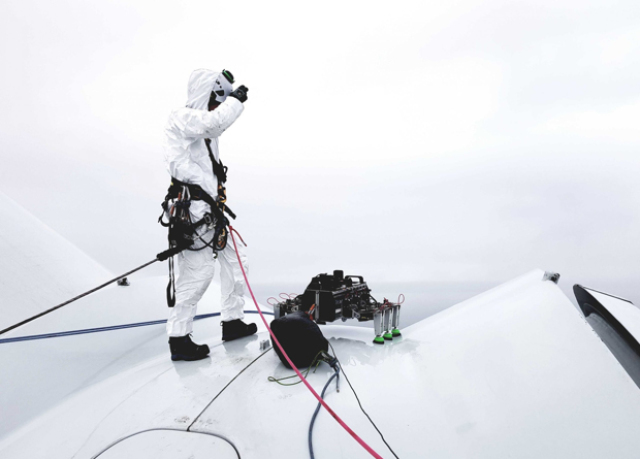Bladebug and ORE Catapult have tested a robot to inspect wind turbine blades at an offshore wind farm on the coast of Scotland. It moves along the surface of the blade using six legs with vacuum suction cups and broadcasts video from the camera.
In order for large megawatt wind turbines to work for their estimated life or even longer, specialists periodically diagnose them: inside and outside the tower. For example, it is necessary to monitor the condition of the surface of the blades and timely detect places for painting and more serious repairs. Basically, manual labor is used for this: specialists climb to the top of the tower and descend on cables along the blade. This is a potentially dangerous method of maintenance, and in addition, it is quite long and labor-intensive.
As an alternative, engineers have been developing robots in recent years that can perform at least diagnostics on their own. Engineers, for example, suggest using drones as a quick and easy-to-deploy tool or suspended robots that can get closer to the blades and take high-quality images of them for subsequent diagnostics.
Specialists from the company Bladebug have developed a robot that works directly on the blades of a wind generator, but does not hang on a cable, but holds itself independently thanks to suction cups with variable pressure. It has six legs that can move back and forth, up and down, and bend. Thanks to this, the robot can either crawl along a relatively flat section of the blade, moving its legs in turn, or walk along its edge, hugging the blade from both sides. The robot has a camera for broadcasting and recording video of the surface, as well as a robot arm for simple repairs.
Previously, engineers tested the robot on ground-based stands, and now they have demonstrated it on a real wind generator from ORE Catapult, installed on the East coast of Scotland. The height of the windmill is 195 meters from the base to the tip of the vertically standing blade, and the blade length is 84 meters. During the tests, the robot walked 50 meters along the curved surface of the blade and successfully transmitted the video to the operator.
There is another aspect in the maintenance of high-power generator blades that engineers are trying to simplify — washing and de-icing. In 2018, the Latvian company Aerones demonstrated a drone for processing such means, which receives energy and liquid from the ground and thus has an almost unlimited operating time.
Gregory Copies

